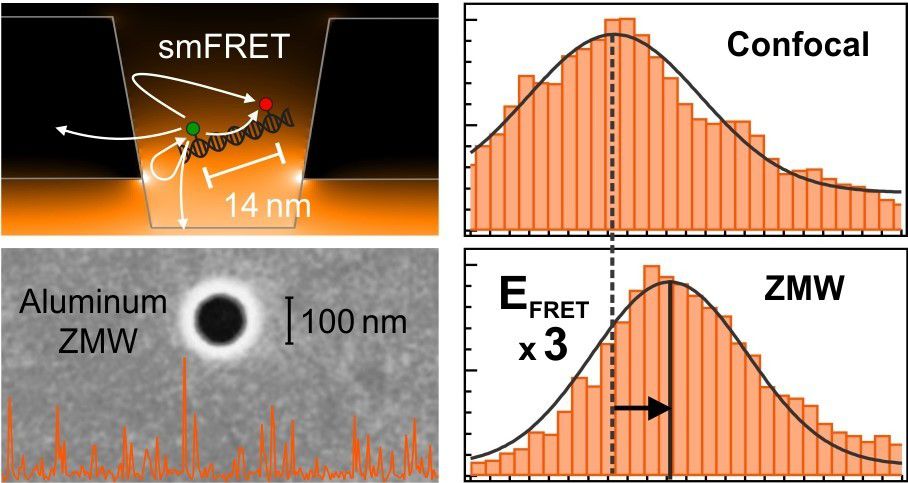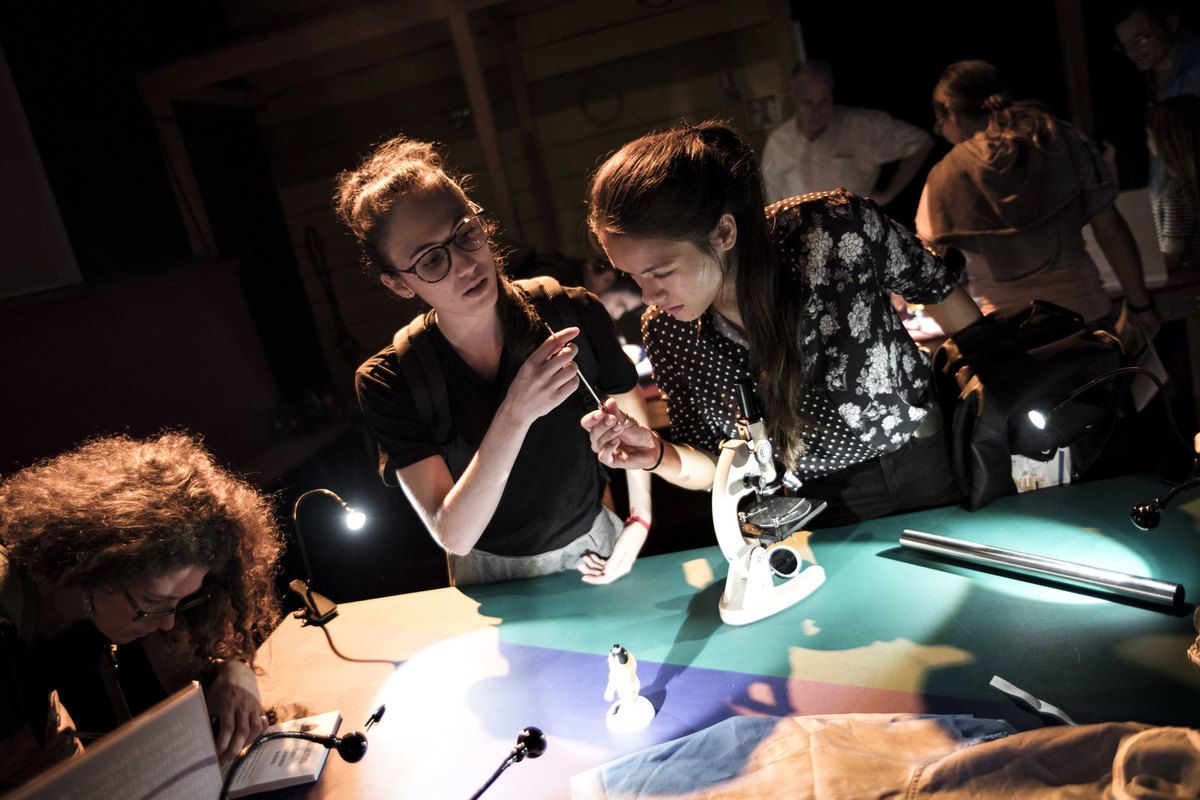Deep UV plasmonic enhancement of single protein autofluorescence in zero-mode waveguides
Detecting proteins in the UV range is appealing to take advantage of their natural tryptophan fluorescence and rule out all the issues related with external fluorescence labelling. However, proteins feature a much lower fluorescence brightness than conventional fluorescent dyes. This is where nanophotonics can improve the detection sensitivity.
In a recent Nano Letter article, we report the first demonstration of single protein UV fluorescence enhancement using aluminum zero-mode waveguides nanoapertures. Dedicated strategies were developed to overcome the technical challenges of working in the UV range. This involves optimizing the UV aluminum nanostructures fabrication, counteracting the metal photocorrosion, dealing with the limited photostability of proteins and developing robust analysis tools to extract useful information out of noisy traces.
This unprecedented detection of single protein fluorescence with UV plasmonics paves the way for interrogating individual proteins in their native state and at physiological concentrations.
Also freely available on ArXiv 1909.08227

Preventing Aluminum Photocorrosion for Ultraviolet Plasmonics
Ultraviolet plasmonics is a burgeoning scientific field where the strong molecular absorption bands in the UV range are combined with the intense electromagnetic fields of plasmonic nanostructures. This powerful combination is highly promising to promote surface-enhanced spectroscopy and catalysis. However, in a recent J Phys Chem Lett article, we find that the photocorrosion of aluminum can severely hamper UV plasmonics applications but appropriate protection solutions can circumvent this issue.
Significance:
- We highlight the occurrence of the aluminum photocorrosion effect and explain its origin by the nonlinear absorption of water in the UV leading to the production of hydroxyl radicals.
- Different protection strategies are developed to prevent the photocorrosion based on scavengers for reactive oxygen species and additional polymer layers, achieving a 10-fold increase in the UV power range with no visible corrosion effect.
Also freely available on ArXiv 1907.11003

New team member: François Iv
Since beginning of September, our team welcomes François Iv to help us in the protein research within the framework of the ERC TryptoBoost project.

Extending Single-Molecule Förster Resonance Energy Transfer (FRET) Range beyond 10 Nanometers in Zero-Mode Waveguides
Förster resonance energy transfer (FRET) is widely used as a molecular ruler to monitor biomolecular conformations and interactions dynamics. However, an intrinsic limitation in FRET is that the signal decreases very rapidly with the dye to dye distance, and FRET is generally not detectable anymore beyond 10 nm.
In a recent paper published in ACS Nano, we use nanoapertures milled in an aluminum film (called zero-mode waveguides ZMW) to overcome the spatial range limit in FRET. Our optimized structures creates favorable conditions to enhance the FRET efficiency by 3-fold at a large donor-acceptor distance of 13.6 nm, well beyond the classical Förster radius.
Significance:
- We demonstrate that ZMWs can extend the spatial range of FRET to distances where dipole-dipole interactions would otherwise be too weak to produce detectable FRET signals.
- ZMWs can be combined with molecular constructs featuring multiple acceptor dyes to further improve the FRET efficiency and extend the spatial range.
- General guidelines are discussed for performing quantitative FRET measurements inside ZMWs and nanoapertures and apply our approach for biophysics and biochemistry applications.
Also freely available on ArXiv 1907.03734






